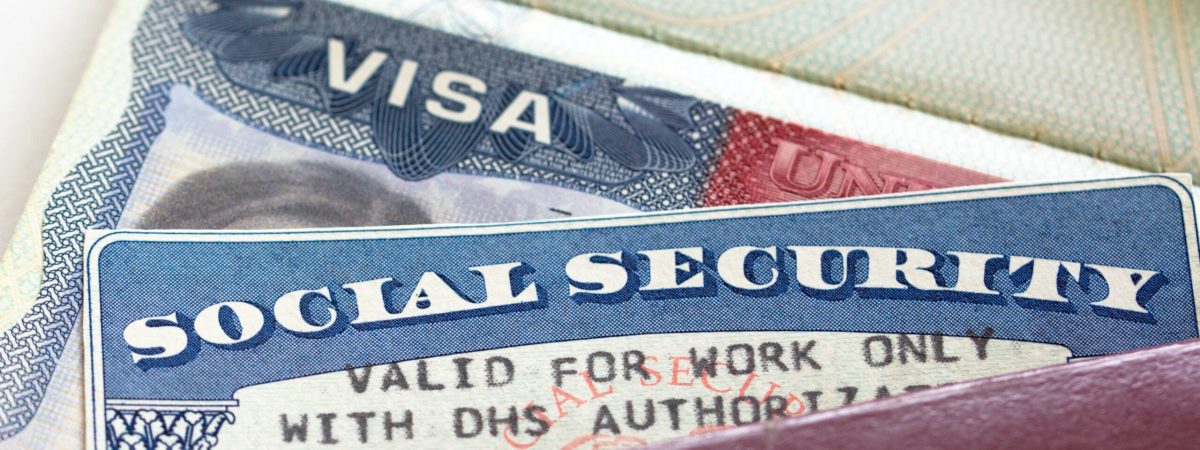The U.S. is known around the world as the land of opportunity. It is a country where people pursue dreams and have opportunities for financial stability and success. Many notable people throughout the years have taken advantage of work visa opportunities.
Yet, in order to work in the United States, people must be U.S. citizens, permanent residents, or possess certain types of work visas or permits. There are many people across the globe that have a desire to work in the United States.
Every fiscal year the United States issues around 140,000 employment-based immigration visas to qualified applicants. In some instances, children and/or spouses can accompany the applicant.
So how does it work? We review work permits and visas and some of the most frequently asked questions.
The Different Types of Work Permits and Employment Visas
The United States is the world’s largest economy. Its GDP (Gross Domestic Product) is at about 20.80 trillion. It is because of economic prosperity that many look to the country as a place to develop their skills or grow their careers. There are several different ways someone can work in the United States. These include:
- Temporary non-immigrant visa
- Permanent immigrant workers
- Student and exchange visas
- Temporary visit for business
Let’s look at some of these a little more closely. Every category of visa will have different requirements and applicants must meet those requirements before they can become eligible.
Temporary Non-Immigrant Visas
Some people wish to work in the United States on a temporary basis or can only qualify for temporary work. This applies to many workers that do seasonal work or want to do temporary work to gain experience or advance their careers. Most of the time, an employer will file a petition on behalf of their worker. Common types of temporary visas include:
- H Visas: The H visa applies to people that are part of a specified academic field. They have a qualified college degree or work experience equivalent. These visa holders will most often have a residency limit of three years. There are different subcategories within the H visas that include H-2A and H-2B (for seasonal agricultural work) and H-3 (for those seeking training in several endeavors).
- I Visas: These visas apply to members of the foreign press including reporters, film crews, or related occupations.
- L visas: These are visas for people transferring within a company they already work at the high management level or executive level.
- O visas: For people with extraordinary or exceptional abilities.
Permanent Immigrant Workers
This different category of visas is part of the 140,000 permanent work visas the U.S. issues every year. This is for people interested in obtaining permanent residency in the United States. Many can do so when they have a combination of qualifying characteristics, including work experience, education, or familial ties.
These employment-based visas include:
- EB-1 or first preference: This category applies to those with extraordinary abilities and might apply to athletes, performers, or scientists, and more. This type of visa does not require an employer to petition for you.
- EB-2 or second preference: These visas are reserved for professionals holding qualifying degrees or proven at least ten years of experience in a field, or those who work in a field that is in the interest of the United States.
- EB-3 or third preference: The third category is for those people who hold a bachelor’s degree (or an equivalent in their country).
- EB-4 or fourth preference: This visa might cover certain religious workers, retired international employees, and more.
- EB-5 or fifth preference: These are reserved for investors that make an investment in the United States of more than 1.8 million dollars.
Exchange Programs and Students
The United States continues to welcome students of different nationalities to obtain an education in the United States or to participate in exchange programs.
- F visas are for academic students studying in accredited universities. The ability to work is valid as long as the student maintains a course of study at their university.
- M visas are reserved for students in vocational (or non-academic) programs. M-3 visas are available for students who commute from Canada or Mexico.
If you live outside of the United States and are interested in working in the country, you have to apply for a visa from the U.S. Department of State. USCIs must also approve your petition.
How Does Working with a Lawyer Help in Obtaining a Work Visa?
The information above just barely scratches the surface when it comes to work visas, different categories, and the process. The process involved for applying for each visa category might be different depending on your situation. A lawyer will assist with:
- Guiding you towards your best options and course of action
- Helping employers hire a foreign national and petition for them
- Helping untangle immigration issues or ongoing proceedings
- Filling out paperwork in compliance with USCIS
- Ensuring the correct paperwork and administrative work is done
- Advice for how to pursue the best course of action
Want to Work in the U.S. or Looking for an Adjustment of Status? Call a Trusted Immigration Attorney.
Whether you are interested in filing for a work visa or looking for adjustment of status after working here, an immigration attorney can make the journey easier to deal with.
Call the Winterberg Law Firm today and talk with a seasoned immigration lawyer for the best advice on your case.

